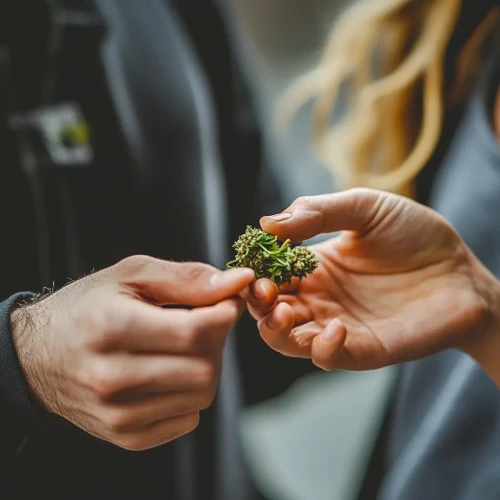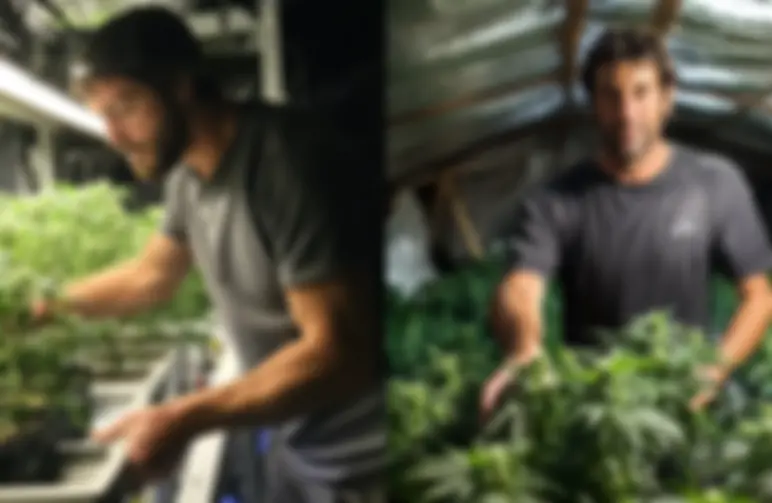Today we're excited to share a fascinating piece of research that rarely makes its way into the hands of everyday (feminised) cannabis seeds growers—but it definitely should. We've summarized an insightful academic paper exploring global trends among small-scale cannabis cultivators, specifically focusing on how growers like you distribute their harvest. Academic insights often stay buried in journals, but we believe that these valuable findings deserve your attention. So, we've broken it down into an easy-to-read summary, packed with information that directly speaks to your experiences and practices. Let's dive in!
Introduction and Background
Cannabis supply is commonly portrayed as controlled by criminal organizations. However, recent research reveals a significant portion of cannabis is grown domestically by small-scale cultivators who operate outside these stereotypes. This study investigates how small-scale cannabis growers distribute their harvest, emphasizing the differences between countries and between distinct types of growers.
Objectives and Methodology
The primary goal of the study was to understand how small-scale growers around the world distribute cannabis and categorize their distribution practices clearly. The researchers used a large online survey targeting primarily small-scale cannabis growers from 18 countries spanning five continents. The survey included two groups:
Subsample 1: Included 8,812 growers who answered questions about their cannabis cultivation and distribution behaviors.
Subsample 2: Included 2,296 growers who provided detailed responses about their distribution practices from 13 countries.
This extensive data allowed for the creation of detailed typologies, highlighting both motivations for growing cannabis and actual behaviors involved in distributing surplus cannabis.


Key Findings
The study discovered several significant insights:
Grower Motivations
Most growers (77%) cultivated cannabis because they enjoyed the act of cultivation.
Around two-thirds (68%) grew cannabis primarily for personal recreational use.
A substantial proportion (66%) also cited health concerns, considering home-grown cannabis healthier.
About one-third of growers were motivated, at least partly, to supply cannabis to others, mostly for medical (21%) or recreational (19%) reasons. Profit as a primary motive was rare (8%).
Actual Distribution Practices
Despite fewer growers explicitly stating they cultivated cannabis to distribute it, the majority (69%) did distribute surplus cannabis in some form.
Social supply—sharing cannabis without a profit motive—was far more common (64%) than selling (19%).
Social suppliers typically shared with close friends (91%) or family members (57%) rather than strangers or acquaintances.
"Selling" was primarily small-scale; more than half of sellers did so solely to recover their growing expenses.
Types of Grower-Distributors
Based on distribution behavior, growers were classified into four main types:
Non-Suppliers (31%): Grew cannabis exclusively for personal use without distributing.
Exclusive Social Suppliers (50%): Shared cannabis but did not sell.
Sharers and Sellers (14%): Engaged in both sharing socially and selling surplus cannabis.
Exclusive Sellers (5%): Only sold cannabis without sharing.
While growers who sold (particularly the "exclusive sellers") often grew more plants and expressed stronger profit motivations, most sales were still small-scale, localized, and occurred primarily within personal social networks.
Scale and Economic Impact of Selling
Most growers who sold cannabis did so infrequently, with modest earnings. Only a few participants (primarily in the U.S., where some legal cannabis markets exist) reported significant profits, sometimes exceeding $5,000 per crop.
Earnings varied greatly across countries, reflecting differences in cannabis laws and enforcement.
Sociodemographic Profile and Criminality
Growers across all categories generally had mainstream employment or education backgrounds.
Contrary to stereotypes of drug suppliers as marginalized criminals, most cannabis growers in this study were socially integrated and exhibited very low involvement in other types of crime, such as violence or theft.
Cannabis selling, even when present, typically supplemented other legitimate income sources rather than replacing them.
Cross-Country Differences
Finland, Switzerland, and New Zealand had higher proportions of growers engaging in selling cannabis.
New Zealand notably featured a high proportion of growers motivated by supplying medical cannabis.
U.S. growers, influenced by legal and commercial frameworks in certain states, were more profit-driven and large-scale in their operations compared to growers in countries with more restrictive cannabis laws.
Discussion and Implications
The researchers argue that these findings challenge conventional portrayals of cannabis distribution as dominated by organized criminal gangs or marginalized groups. Instead, many cannabis growers participate in normalized, low-level supply practices, indicating a shift in perception and practice away from criminal stereotypes.
Policy Recommendations
The authors recommend that policy-makers consider these findings when developing or reforming cannabis legislation. Policies should acknowledge that many growers engage in social or minimal commercial supply rather than large-scale criminal activities. Suggested reforms include:
Clearly differentiating between social/minimally commercial supply and larger commercial enterprises.
Reducing criminal penalties for low-level distribution practices.
Developing nuanced legal frameworks that accommodate small-scale, personal, and community-oriented cannabis cultivation.
Such policies could prevent unnecessary criminalization of otherwise law-abiding citizens and avoid reinforcing social inequalities, particularly those involving race and class disparities in drug law enforcement.
Limitations of the Study
The researchers acknowledged several limitations:
The online survey method, although effective at reaching a large and geographically diverse audience, might exclude certain groups without internet access.
Being a convenience sample, the survey's participants might not represent all small-scale cannabis growers.
Potential underreporting due to stigma, especially regarding profit-driven selling practices.
Conclusion
The study provides essential insights into global cannabis cultivation and distribution, revealing a common pattern of small-scale, community-oriented cannabis supply that is distinct from organized criminal stereotypes. These insights can guide more realistic and socially just cannabis policies that reflect contemporary practices and norms.
(article source: PubMed)










